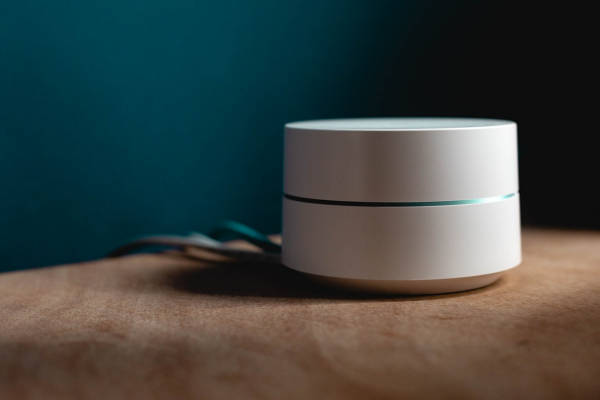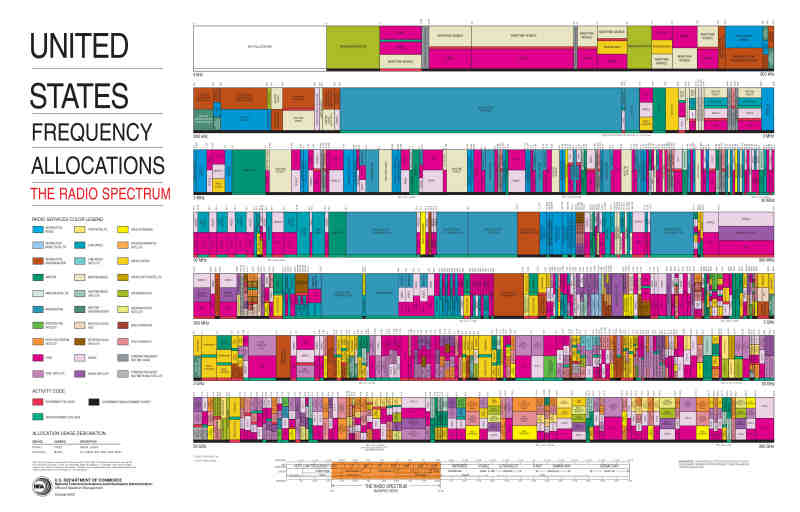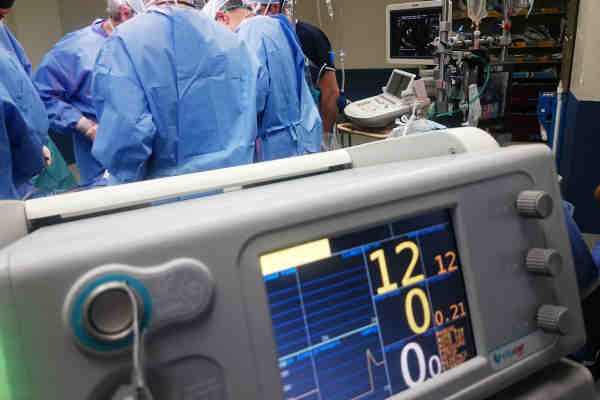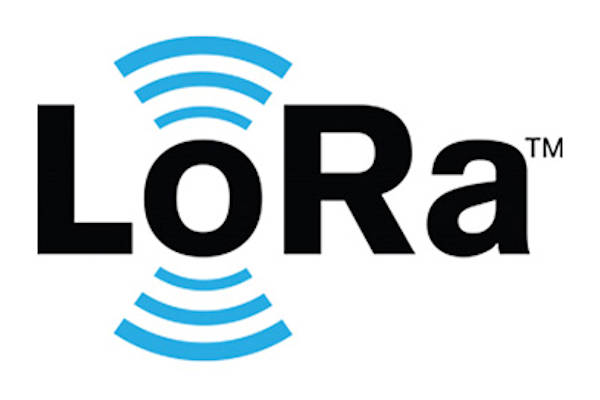What is FCC Certification?

What is required for the FCC Certification of my wireless product?
As a USA FCC testing lab, the bulk of our testing business is FCC Part 15C certifications of wireless products. Our team is composed of former wireless designers and to this point we have worked every possible type of wireless technology both as designers and as a testing lab.
The most common questions we face revolve around what is an FCC Certification and what needs to be done for each particular wireless product?
In this article we’ll try to address the introductory details behind the FCC Certification process and then move into some of the more particular testing parts that your wireless devices may need to be tested against. What you’ll find is that the FCC Certification process may seem a bit daunting at first but the actual testing required is fairly consistent across devices and in a strange way makes more sense then you may initially think.
So why does the FCC require certifications in the first place?

If you go back to the early history of wireless communications, you’ll find the usage of radios (then refereed to as “wireless telegraphy”!) was unregulated until the creation of the of the Federal Radio Commission from the Radio Act of 1912.
Going back to 1921, the first regulations stipulated that broadcast stations making general broadcasts for the public to be constrained to the 833kHz band and the 619 kHz brand. If you take a look at the radio frequency allocation chart above, you can tell how far we’ve come in one hundred years in terms of spectrum usage.
Over the next 15 years radio broadcasting became more popular it was determined that the Federal Radio Commission was not strong enough to enforce the regulatory requirements of the growing broadcast sector and the Federal Communications Commission was created in 1934 to regulate interstate communications by radio, television, wire, satellite and cable (well eventually at least…)
At times it seems like FCC Certifications are more about creating test projects, but in actuality the goal of FCC testing is to actually protect the radio frequency spectrum. Consider the fact that at this point in time, there is a finite portion of the spectrum that can be used for practical wireless application.
With our current means of semiconductor construction, of all the possible spectrum bands that are economical to use for unlicensed usage (300MHz - 900MHz, 1.6GHz, 2.4GHz, and recently 5.8GHz) there is an even more finite limitation as to how many devices can operate simultaneously and at the same frequencies before the cumulative interference overwhelms all the users and the frequency space is no longer usable.
Even though newer wireless technologies had worked to more efficiently utilize the ever-crowded spectrum space through signal modulations to spread signals further, coding techniques to whiten noise, updated transmission schemes, and have utilized frequency hoppping the demand for frequency usage has still outpaced the physical limitations of radios we can currently build.
Across the world, regulatory agencies manage their national spectrums by assigning frequencies to specific uses and by establishing a system of technical requirements so that the devices which are intended to be used by multiple users can efficiently function together and limit overall interference.
FCC Certifications actually exist to ensure the national spectrum of the United States is usable for all types and sizes of companies and end users – when considering what types of testing are required for your FCC Certifications you should be keeping in mind the regulatory intent is always to ensure interference free usage of wireless devices. With that maxim in mind, you’ll start to see the shared common regulatory thread.
What are devices that are subject to an FCC Certification?
As we discussed in our guide to FCC Part 15 testing, the FCC in general groups devices under two major categories of operation: unintentional radiators & intentional radiators.
What is an unintentional radiator?
In 47 CFR § 15.3, the FCC defines an unintentional radiator as “any device which generates radio frequency energy for use within the device, or that sends radio frequency signals by conduction to associated equipment via connection wiring, but which is not intended to emit RF energy by radiation or induction”.
Common types of unintentional radiators include:
- Personal computers (without wireless functionality!)
- Household appliances
- Radio receivers
- Toys
- Printers
The list goes on, but for all effective purposes any device which does not have RF functionality is considered an unintentional radiator.
As of 2018, unintentional radiators are tested to the FCC Part 15 SDoC process.
In certain cases, the manufacturer of an unintentional radiator may need to conduct an FCC Certification for their product but that usually involves the manufacturing being out-of the USA and not being able to meet the responsible party requirements of the SDoC, under 47 CFR § 2.909 - Responsible party. or they may need to apply alternative labeling for the project because they cannot meet the the SDoC labeling requirements.
If you need testing for an unintentional radiator, please check out our guide to the FCC SDoc testing requirements or submit your project details for a free quote.
What is an intentional radiator?
An intentional radiator is the opposite of an unintentional radiator.
Intentional radiators are devices that by design implement and generate RF to communicate through wireless means.
Commons types of intentional radiators include:
- Cellphones
- Garage Door Openers
- Wireless Microphones
- Remote Controls
- IoT Sensors
- Wireless Gateways
If you are looking for additional guidance on if your device is considered an intentional radiator and requires an FCC certification a great starting point is to review 47 CFR Part 15 - RADIO FREQUENCY DEVICES which outlines which devices will require FCC certification testing.
What is a licensed intentional radiator?
The FCC has two categories of wireless devices which need certification testing: licensed and non-licensed devices.
Licensed devices are wireless transmitters which use certain portions of radio spectrum which the FCC has deemed critical for national purposes and require both testing and the explicit permission from the FCC to use (ie. the “license”).
Licensed RF transmitters are assigned specific receive and transmit frequencies from the FCC and the licensed users are then permitted to operate their wireless systems on these specific operation frequencies:
Common Licensed frequencies include:
- VHF Television bands (54 to 216MHz)
- UHF Television bands (470 to 890 MHz)
- AM Radio channels (.535 to 1.6 MHz)
- FM Radio Channels (88.1 to 108.1 MHz)
- Cellular Phone Channels (700 to 894 MHz, 1850 to to 1990MHz, and others as technology grows)
As you can see most licensed frequencies are for consumer usage for television and radio and cell phones.
In some cases, point-to-point communication networks, in the microwave frequencies can be issued on a licensed basis but this is for very specific purposes for major telecommunications projects.
Some frequencies are not even allowed to be used on a licensed basis, and are primarily used for safety and military purposes in the USA.
Restricted frequencies include:
- 0.090 to 0.110(MHz), Loran C Radionavagation
- 0.495 to 0.505(MHz), Maritime distress frequency
- 2.1735 to 2.1905(MHz), Mobile distress frequency
- 4 to 12.57(MHz), Global Maritime Distress & Safety Frequencies
- 13.3 to 13.4, 25, 37 - 38, 73 - 75 (MHz), Radio astronomy
- 108 to 160MHz, Aeronautical radio frequencies
- 240 to 285MHz, satellite down link and military usage
- For the full list of restricted frequencies, of which there are a hundred more, see Annex K, Technical Standards for Federal “Non-Licensed” Devices.
What is an unlicensed intentional radiator, under Part 15?

In the section above, we took at look at the types of licensed and restricted wireless devices. However, these devices make up a very small part of FCC Certification testing we conduct.
The FCC has a specific section of testing requirements for unlicensed usage of low power wireless, which is found in 47 CFR Subpart C - Intentional Radiators.
When clients are asking for an FCC Certification, 47 CFR Subpart C - Intentional Radiators is the starting point of what types of testing they are looking for.
The FCC permits common, low-power wireless to be operated in the USA, but they need to be run through a specific testing process, (ie. the FCC Certification) in order to be authorized for usage across the country.
These devices are tested under Part 15, and specially these is the “Part 15 C” you may have commonly heard about. Part 15 C wireless deviecs are usually low powered, consumer level RF devices, which used shared operating frequencies.
Here is the full list and links to the specific operating requirements for each device under Part 15C:
- § 15.215 Additional provisions to the general radiated emission limitations.
- § 15.217 Operation in the band 160-190 kHz.
- § 15.219 Operation in the band 510-1705 kHz.
- § 15.221 Operation in the band 525-1705 kHz.
- § 15.223 Operation in the band 1.705-10 MHz.
- § 15.225 Operation within the band 13.110-14.010 MHz.
- § 15.227 Operation within the band 26.96-27.28 MHz.
- § 15.229 Operation within the band 40.66-40.70 MHz.
- § 15.231 Periodic operation in the band 40.66-40.70 MHz and above 70 MHz.
- § 15.233 Operation within the bands 43.71-44.49 MHz, 46.60-46.98 MHz, 48.75-49.51 MHz and 49.66-50.0 MHz.
- § 15.235 Operation within the band 49.82-49.90 MHz.
- § 15.236 Operation of wireless microphones in the bands 54-72 MHz, 76-88 MHz, 174-216 MHz, 470-608 MHz and 614-698 MHz.
- § 15.237 Operation in the bands 72.0-73.0 MHz, 74.6-74.8 MHz and 75.2-76.0 MHz.
- § 15.239 Operation in the band 88-108 MHz.
- § 15.240 Operation in the band 433.5-434.5 MHz.
- § 15.241 Operation in the band 174-216 MHz.
- § 15.242 Operation in the bands 174-216 MHz and 470-668 MHz.
- § 15.243 Operation in the band 890-940 MHz.
- § 15.245 Operation within the bands 902-928 MHz, 2435-2465 MHz, 5785-5815 MHz, 10500-10550 MHz, and 24075-24175 MHz.
- § 15.247 Operation within the bands 902-928 MHz, 2400-2483.5 MHz, and 5725-5850 MHz.
- § 15.249 Operation within the bands 902-928 MHz, 2400-2483.5 MHz, 5725-5875 MHZ, and 24.0-24.25 GHz.
- § 15.250 Operation of wideband systems within the band 5925-7250 MHz.
- § 15.251 Operation within the bands 2.9-3.26 GHz, 3.267-3.332 GHz, 3.339-3.3458 GHz, and 3.358-3.6 GHz.
- § 15.252 Operation of wideband vehicular radar systems within the band 23.12-29.0 GHz.
- § 15.255 Operation within the band 57-71 GHz.
- § 15.256 Operation of level probing radars within the bands 5.925-7.250 GHz, 24.05-29.00 GHz, and 75-85 GHz.
- § 15.257 Operation within the band 92-95 GHz.
What is an unlicensed intentional radiator, under other part numbers?
If you noticed in the massive list above, the test requirements for your FCC Certification under Part 15 C all include “Part 15” in them. However, not all wireless unlicensed devices are granted equipment authorization under Part 15.
Certain types of devices are tested under different sets of regulations (for purposes of this blog post, we are just going to focus on Part 15 FCC Certification).
Here are other FCC Part Numbers that you may need an FCC Certification depending on your device type.
These types of devices are less common, but we can also provide testing to the below FCC Parts if needed:
- FCC Part 11, 47 CFR Part 11 - EMERGENCY ALERT SYSTEM
- FCC Part 18, 47 CFR Part 18 - INDUSTRIAL, SCIENTIFIC, AND MEDICAL EQUIPMENT
- FCC Part 22, 47 CFR Part 22 - PUBLIC MOBILE SERVICES
- FCC Part 24, 47 CFR Part 24 - PERSONAL COMMUNICATIONS SERVICES
- FCC Part 27, 47 CFR Part 27 - MISCELLANEOUS WIRELESS COMMUNICATIONS SERVICES
- FCC Part 25, 47 CFR Part 25 - SATELLITE COMMUNICATIONS
- FCC Part 90, 47 CFR Part 90 - PRIVATE LAND MOBILE RADIO SERVICES
- FCC Part 95 , 47 CFR Part 95 - PERSONAL RADIO SERVICES
As a quick rule of thumb for the most common non-Part 15 FCC Certificatons:
- FCC Part 18, is not commonly certified. Part 18 is used for wireless chargers and other devices which make use of RF energy but not for means of communication.
- FCC Parts 22 & 24 & 27, these are very commonly certified and both of these part numbers are used for the testing of cellular technologies in your smartphone and IoT devices. Depending on your application, your existing FCC Certified module for your cellular device has potentially been certified under FCC Parts 22, 24, and 27
- FCC Part 25, if you are using a commercial satellite service for wireless communication your device will need to be certified under Part 25
- FCC Part 90 & 95, if you are building a walkie-talkie or other type of handheld communication device for traditional audio radio purposes your device will be tested under Part 90 or 95 depending on the specific frequencies of usage.
What is involved in the FCC Certification Process?
Once you have identified the correct FCC Part number and sub-section of the your wireless device, you are finally ready to begin testing.
What you’ll find is that each specific wireless technology has certain types of radio functionality that needs to operated by an accredited testing lab to ensure that the device meets the FCC’s operating requirements. This includes ensure the device transmits in the correct shared frequency space, has RF transmit power which is below the regulatory limits, the transmitter does not transmit harmonic spurs into restricted frequency areas, and the device does not dwell too long transmitting so as to interfere with other devices.
In terms of testing complexity, certain radios require much more testing then others for the FCC Certification. For example under FCC Parts 22, 24, or 27 cellular radios operate on multiple frequency bands with various modes of modulation. For the FCC Certification testing, we’ll need to test to each specific frequency and modulation type. This results in a much longer test report and lab time for the certification.
In contrast, consider a simple one frequency fixed transmitter such as your garage door opener operating at 433.92MHz. This wireless product only has one fixed channel and one type of modulation. This results in a much shorter test and the required lab time for the certification testing.
With the influx of IoT devices, there have begun to be many more multi-radio products that require FCC Certification testing. In general, you’ll be required to test each type of radio independently and then also run testing for your FCC certification with both radios running at the same time to ensure there are no edge cases of unintended emissions that occur only when both radios are run at the same time.
One of the major regulatory concerns for the FCC, is not only frequency spectrum protection but now also consumer health. If you are building a wireless device that requires FCC certification you will need to perform either SAR Testing or calculate the maximum possible RF exposure for the end device user from your wireless radios.
One major determining factor in what type of RF exposure you will need to perform is whether the device is considered a portable or a mobile product.
A portable device (like a wearable smartwatch) is an intentional transmitter which is intended to be used by an end user at a distance less than 20 centimeters from their body. Common portable devices include smartwatch type IoT devices and cell phones.
The other category of RF exposure is devices which are considered mobile devices. A mobile device is an intentional transmitted which is intended to be used by an end user at a distance more than 20 centimeters from their body. The typical common example of a mobile device is a Wi-Fi Router.
Once the radio testing, EMC testing, and RF exposure testing has been completed. The next step is you will need to register your company with the FCC. The FCC will issue you a formal “grantee code” which will be a random 5 digit number which is used to uniquely identify your company and any subsequent devices.
At this point, you’ll need to provide the following technical documents for your project in order to have a testing lab began to prepare for the formal filling:
- Schematics
- BOM
- PCB Silkscreens / Component Designators
- Description of Operation Document
- Block Diagram
- Owners Manual
- ID Label Drawing
- Written Instructions & Firmware For Operating Device in Wireless Test Modes
Unlike many other test labs, our all inclusive project pricing includes not only the formal lab testing but all the FCC filing fees and grantee code costs. In additional we will provide you with full compliance support in order to review and prepare your formal technical documentation in order to submit your test project to the FCC.
The filings fees for an FCC Certification can be thousands of dollars, but this is already included in all of our testing projects.
In our experience, with FCC Certification projects usually 40% of the effort in the project involves the actual FCC Certification testing. The more difficult portion of the testing is ensuring the documentation and support files are composed correctly so that the FCC will accept the submission.
Once your submissions files are completely correct and ready for submission, the final step is that you will submit your completed project to the Telecommunication Certification Body (TCB). In the mid 2010’s, the FCC removed itself from reviewing low powered wireless devices. They created an authorized set of external bodies which now review technical files and issue FCC Certification separately. For the vast majority of wireless devices, a third party other than the FCC will be reviewing and issuing the final FCC certification.
How Can Sunfire Testing Assist in The FCC Certification Process?
We understand that the FCC Certification is not the most straightforward process. As both wireless designers and an EMC test lab, we stand ready with decades of experience to help you identify the required FCC testing and get your wireless device FCC certified.
- We have worked on hundreds of FCC certification of not only routine Part 15C devices, but on more complex cellular devices (Parts 22/24/27), Satellite devices (Part 25), and mobile radio services (FCC Part 90 & 95). At this point, we know what your devices requires for testing right from the start
- Because of the scale of testing business, we have excellent working relationships with multiple TCBs to speed up the filing process and address any regulatory concerns early in the process
- As former wireless designers, we can assist not only the testing and compliance support, but we understand how to prepare your devices for testing at the firmware and PCB level to speed up your ramp up for testing and ensure there are no technical issues when it comes time for formal testing
- Our project involvement extends beyond just test reports; many test labs will simply product test reports and their engagement is over. That’s not our business model, we are here to support your product and assist in the product packaging, labeling, and other associated compliance needs for your project testing. All of this provided at no additional cost
If you are working on a device which needs an FCC Certification, contact us today for a free quote on your next wireless project.
FCC Certification testing is one our core competencies, and our FCC Certification Costs can start from only $2499. One our sales engineers will be happy to talk through any design questions and provide a comprehensive testing quotation for your next FCC certification project.
We make compliance testing easy.
Submit your project details today for a no-cost quote
Request Quote

